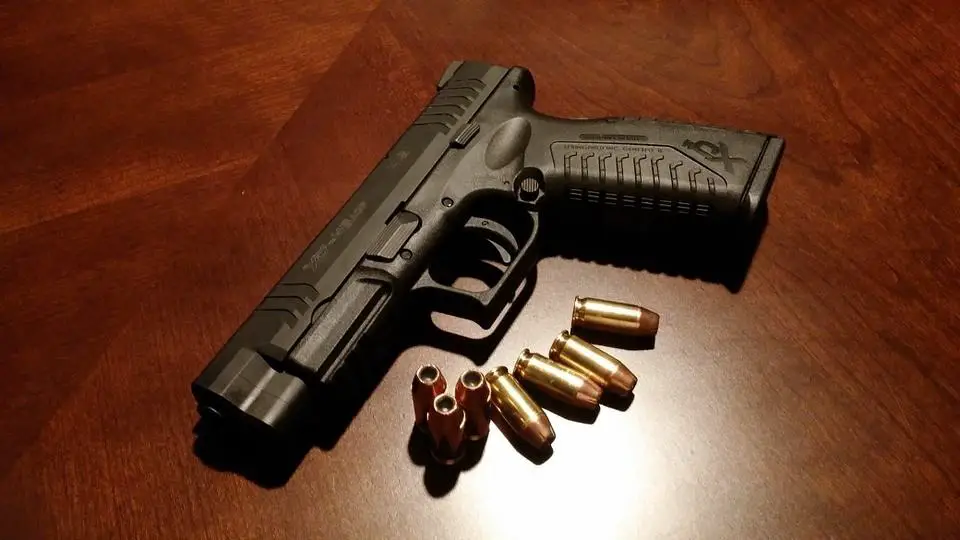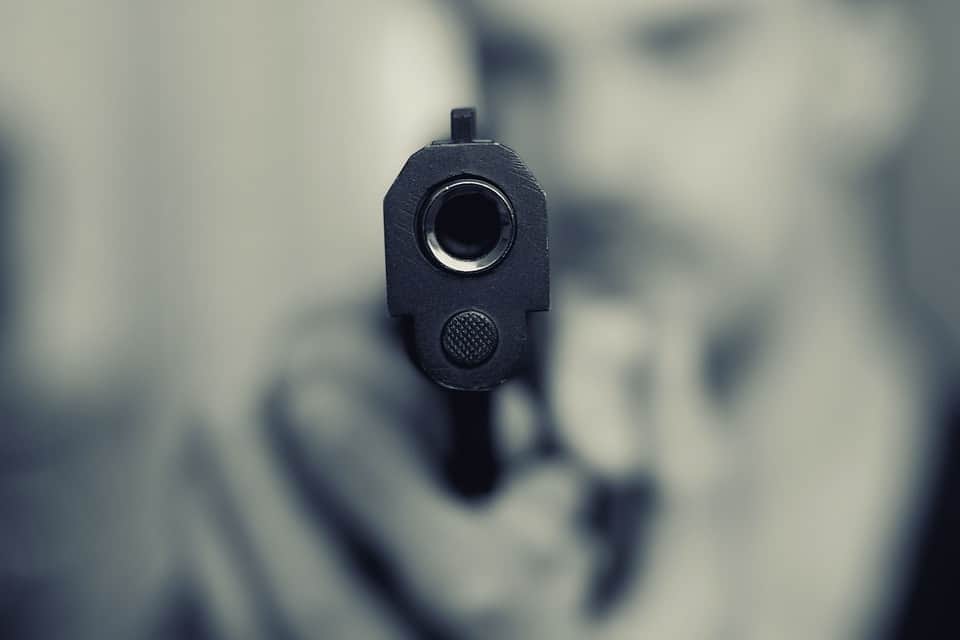As an Amazon Associate we earn from qualifying purchases.
You might have heard the word caliber before so what does caliber mean and how do you determine it in your firearms? Determining the caliber of a rifle or handgun is important because it tells you what type of bullet and its size will be.
Caliber can determine how much damage you’re gonna inflict on a target and if it’s appropriate. You don’t want to put a big hole in-game animals during hunting. Thus, this article will answer the question, how is the caliber of a rifle or handgun determined?
Contents
How Is the Caliber of a Rifle or Handgun Determined?
The caliber of a rifle or handgun is determined by measuring the diameter of the bore of the gun from one land to the other. Inside the barrel of the gun, “lands” are the raised portions that lie between the grooves.
So, as an example, a .45 caliber gun has a barrel diameter that measures 0.45 inches.
Sometimes, instead of using measurement, the caliber will be in reference to the bullet size. For example, this is the case with the popular 9mm handgun.
You usually don’t have to go to the effort to measure, and determining the caliber of a rifle or handgun is fairly easy. Usually, the caliber of the firearm is usually right on it.
For older firearms, the imprinted text can be difficult to read. If you’re unable to read the caliber stamp and you don’t have knowledge about the model of the firearm then you’re going to have to do it the long way by measuring the caliber yourself.

How to Measure a Caliber
You can usually measure the caliber of a rifled barrel in two ways:
- By measuring the distance between the high points (also called “land”) in the rifling. Most cartridges designed outside the United States use land measurements to determine caliber.
- By measuring the opposing low points in the grooves of the rifling. They’re generally larger than land measurements. Most cartridges made in America use groove measurements.
For other firearms, most people measure the caliber as the diameter of the bore from land to opposite land and write it down in hundredths of an inch, thousands of an inch, or millimeters. For example, a bullet that is 30 hundredths of an inch (.30) in diameter is a 30-caliber bullet.
There is no standard maintained for designating a caliber for firearms. You derive the caliber from the diameter of the bullet, which is the distance between the grooves.
Every rifle or handgun has a designated specific cartridge. You should use ammunition that matches the barrel stamp on your firearm. Firearms can have the same caliber and use the same bullet size but can have different cartridges.
What Is the Definition of Caliber?
Caliber is the number that indicates the size of a rifle or handgun barrel and the size of cartridges designed for different gun barrels. Caliber can also indicate the diameter of a bullet used in a firearm.
Can You Express the Caliber in Imperial Measurements?
You can refer to the caliber in either imperial or metric system of measurements. Depending on where the cartridge origin, you’d be using either one of these 2 types of measurements.
While imperial measurement prevails in the United States, most countries use the metric system of measurement. For example, “.45 caliber” is an imperial measurement designation since .45 is the diameter of the firearm measured in inches.
How Can You Refer to Caliber in Metric Measurements?
Metric measurement is the most common measurement used in the world. Yet, it’s entirely different from the imperial measurement system. Take, for instance, a 9mm handgun that has a gun barrel or a bore diameter of 9 millimeters.
There’s no more decimal point and you remove the word caliber. So instead of saying a 9mm caliber, the proper way of saying it is just a “9 millimeter” or “9-millimeter handgun”.
The diameter measured in inches is what determines most caliber. However, some gun enthusiasts use the word caliber to mean the diameter of the bore no matter the measurement system.
For example, some gun owners like to ask about the caliber of your gun as “what caliber of gun do you use?” Even if you own a metric measurement gun, gun owners would know that you’re referring to the general diameter when answering.

What Are Cartridges?
A cartridge is a single unit of ammunition that consists of the cartridge case, primer, and propellant with or without one or more projectiles. You might’ve heard people calling them “rounds” or “loads” and oftentimes mistakenly called “bullets”.
Most people usually give cartridges a name or designation based on the developers or manufacturers.
The cartridge designation usually includes a numerical value that indicates the approximate diameter of the bullet and generally includes the manufacturer’s name.
What Is the Difference Between Bore and Caliber?
Bore in firearms language is the interior of the barrel of a gun or firearm. For guns that have rifled barrels, the diameter of the bore is what I call the caliber. Some old gun enthusiasts use the word “bore” to also mean the caliber (diameter of the bore).
Caliber is a unit of measurement that indicates the interior or bore diameter of a gun barrel and the diameter of the firearm’s ammunition. The word caliber might also mean the length of big guns with relation to their bore diameter.
In general, bore would mean the physical interior of the barrel of a gun with some also using it the same way as a caliber. Caliber, on the other hand, is a unit of measurement for the interior or bore diameter. Caliber can also sometimes mean the diameter of a bullet.
What Are the Different Calibers of Bullets?
The following are the most commonly used calibers with each of their respective imperial and metric system.
|
Inch Caliber |
Metric Caliber |
Common Bullet Diameter |
|---|---|---|
|
.172 |
4 mm |
0.172 inches |
|
.20 , .204 |
5 mm |
0.204 inches |
|
.221 |
5.45 mm |
0.221 inches |
|
.22 |
5.6 mm |
0.223 inches |
|
.224 |
5.7 mm |
0.224 inches |
|
.243 |
6 mm |
0.243 inches |
|
.25 |
6.35 mm |
0.257 inches |
|
.26 |
6.5 mm |
0.264 inches |
|
.27 |
6.8 mm |
0.277 inches |
|
.284 |
7 mm |
0.284 inches |
|
.308 |
7.62 mm |
0.308 inches |
|
.311 |
7.9 mm |
0.311 inches |
|
.312 |
7.94 mm |
0.312 inches |
|
.323 |
8 mm |
0.323 inches |
|
.338 |
8.6 mm |
0.338 inches |
|
.355 |
9 mm |
0.355 inches |
|
.356 |
9 mm |
0.356 inches |
|
.357 |
9 mm |
0.357 inches |
|
.363 |
9 mm |
0.363 inches |
|
.365 |
9.3 mm |
0.365 inches |
|
.375 |
9.5 mm |
0.375 inches |
|
.40 |
10 mm |
0.400 inches |
|
.44 |
10.9 mm |
0.429 inches |
|
.45 |
11.43 mm |
0.451 – 0.454 inches |
|
.50 |
12.7 mm |
0.510 inches |
Related Questions
What Is the Difference in Rifle Caliber?
The difference in rifle caliber is that the higher the caliber, the bigger the bullet. Bigger bullets are preferable if you want to hunt larger games.
Does Caliber Mean Bullet Size?
No, caliber refers to the diameter of the barrel. This also relates to the diameter of the bullet that is going through that barrel.
Why Is It Called a Caliber?
Caliber is derived from the French word calibre which means bore of a gun, size, and capacity.
Conclusion
If you want to be into guns, you should know that certain shooting applications require different types of caliber firearms. You don’t want a large caliber rifle to hunt ducks as they can puncture a wide hole.
You also don’t want small-caliber weapons when you want to penetrate heavy armor. Knowing how to determine the caliber of a rifle or handgun is really important.
